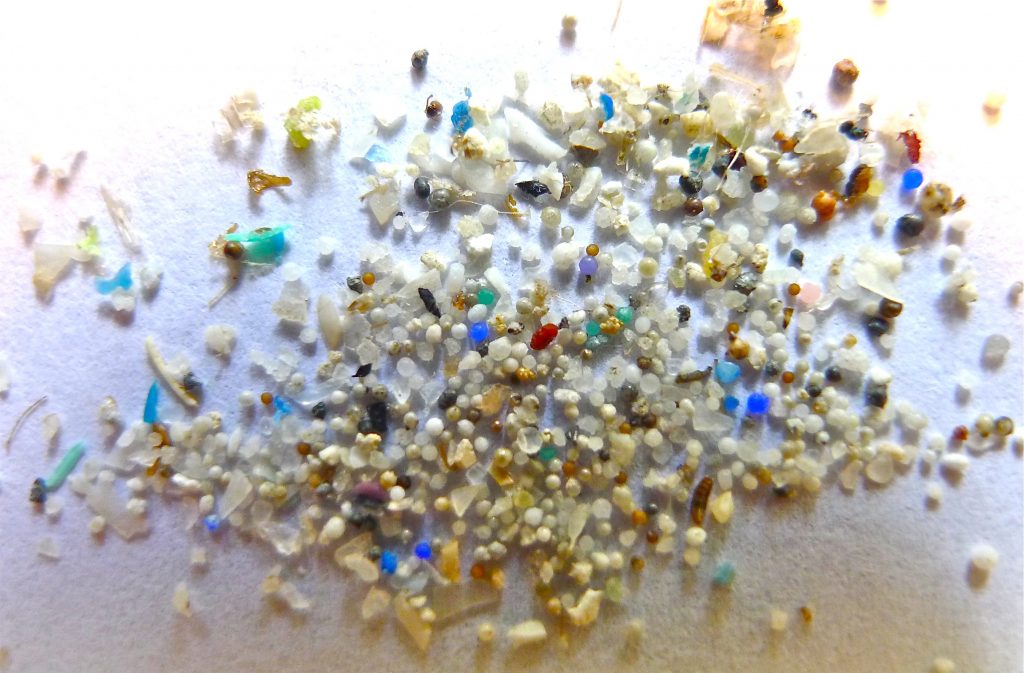Scientist finds microplastics in milk
March 15, 2020A simple experiment conducted by an Israeli scientist has revealed, once again, that microplastics are everywhere. Not only in the environment but also in many every-day consumer products
Numerous international research studies have demonstrated that microplastics have found their way into almost every ecosystem on Earth as well as products for human consumption, such as fish, salt, and beer. Microplastics form primarily when plastic waste is washed into the oceans and rivers and begins to break down due to exposure to wave energy, UV-radiation, salt, wind, and other external effects.
Microplastics have become so ubiquitous that they might even permeate the air we breathe. Scientists are becoming increasingly concerned about potential long-term health implications. Despite the fact that studies have not yet established any direct link between microplastic consumption and adverse health effects in humans, the damaging impacts of microplastics on marine organisms have begun to emerge.

Microplastics have found their way into almost every ecosystem on Earth as well as products for human consumption, such as fish, salt, and beer. Photo by Oregon State Universit on Flickr
Plastic in milk
Noam van der Hal, a PhD in Environmental Sciences at the University of Haifa and current Mimshak fellow at the Ministry of the Interior, has examined different types of cow milk for microplastic particles. Van der Hal took sixteen samples from three different brands of milk that were sold in three individual types of packages.
“The process was pretty straightforward. I took various samples of milk from a plastic bottle, a plastic bag, and a cardboard container and percolated them through different-sized filters. Through this, I was able to determine the most accurate number of particles per sample,” van der Hal explains.
Just as van der Hal anticipated, all three brands of milk contained microplastics, ranging from 10 to 200 particles per sample.
In addition, van der Hal visited a dairy farm and took three samples from one of the large tanks where the milk is stored before it is picked up by trucks and distributed to buyers. “In order of magnitude, I found fewer particles of microplastics in those samples. That means for every 10 particles of plastic in the packaged milk, I found only one particle per sample from the tank,” van der Hal says.
In short, the milk that came from the farm contained fewer microplastics than the actual packaged and ready-to-sell product.
Based on these findings, van der Hal speculates that the bottling process is the main source of microplastic contamination with respect to the milk samples. “Some of the particles are merely fibers while others are actual pieces of plastics, but my guess is that most of the particles leach into the milk during the bottling process.”
Although it is only an educated guess, van der Hal concludes that either loose plastic particles were already inside of the containers prior to the bottling, or they broke away from the inside of the packaging while the milk was bottled.
“Admittedly, this was an off-the-record experiment and not part of an elaborate research study. Therefore, my findings cannot be regarded as official results. However, what I did can easily be reproduced in a proper research scenario, and I assure you the results will be pretty much the same,” he stresses.

“Wherever we look, we find microplastics”
This was not the first time van der Hal examined consumer products for microplastic pollution. Last year, he was involved in a research study conducted at Tel Aviv University, which found significant quantities of microplastics in sea salt. The study concluded that every Israeli consumes roughly 2,000 pieces of microplastic each year.
In 2017, van der Hal and two of his colleagues found that considerable amounts of microplastics are floating in the Israeli Mediterranean waters impacting marine life, especially fish. A number of rabbitfish, which were surveyed during the study, were found to have substantial amounts of microplastic particles in their digestive tracts.
“Once again, the findings of this experiment have not been published and are not officially valid. However, there is a big chance someone else is working on the same subject right now, and it’s only a matter of time until a public research study will get the same results,” he explains. “The goal of this experiment was simply to strengthen the current state of research that wherever we look, we find microplastics. The question is, what are we going to about it? Do we want to keep contaminating our environment and potentially our bodies with microplastics?
Or do we start doing something about it?” van der Hal concludes.
This ZAVIT article was also published in Ynetnews on 02/29/2020.







